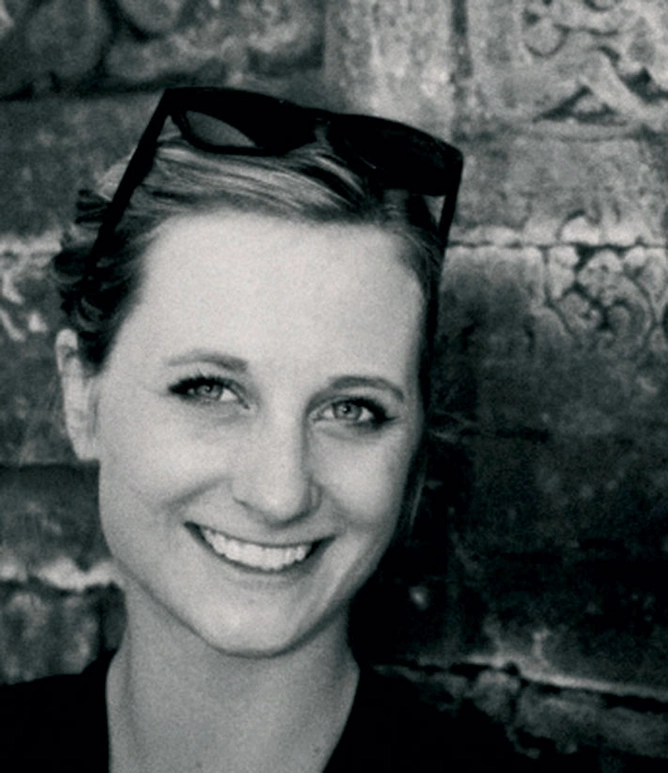The first time she came to India from Konstanz, a German university town of 80,000, Isabelle-Jasmin Roth was 19. “I felt like I was in a Monty Python sketch,” she recalls, referring to the British absurdist humour group. But she decided to stay back and build a career in advertising and marketing, before setting up Ro.Gro, a design and creative consultancy, in New Delhi’s Shahpur Jat art ghetto last year. The company’s client list includes Bosch, Adidas, and MTV.
Michelle Bauer came to India from South Africa in 2011, when her husband, a landscape architect, decided to open an office in Pune. While hanging out at parties, Bauer figured that the sparkling fruit drinks often used in cocktails were hardly available locally. Nearly 24 months of market research and product development later, she set up Good Juicery to bridge this gap.
Ema Trinidad of the Philippines came to India from Dubai in 2007 to research the market and find distributors for a U.S.-based skin-care business. “I had no intention of setting up a business here. I used to meet women during product trials, and soon they were lining up for the products. Many of them asked where my salon was. That’s when I realised there was an opportunity to start up.” She is now managing director of Ema Spa, a high-end wellness clinic she started in Bangalore.

Three different people, three different journeys. The thread that binds: They are women, not Indian, and have built entrepreneurial careers in India—the 142nd easiest place in the world for doing business according to the World Bank.
Complicated taxation and bureaucracy are the culprits most cited to explain India’s unpopularity as a business destination; in a man’s world, patriarchal biases aren’t a factor. For a woman, of course, that’s where the problems start. Add to that the repelling effect of mysogynistic crimes—German broadcaster DW says the number of women tourists in India fell by 35% between January and March last year, following a widely publicised gruesome incident in Delhi—and the expat woman’s choice of this country to open shop is striking.
Or perhaps it isn’t: India after all ranks ninth out of 34 countries in the 2014 HSBC Expat Explorer survey, which polled 9,800 expats in over 100 countries. An ultra-affordable lifestyle is the most advertised magnet: The survey says 44% of expats find the cost of raising children lower in India than in their home country.
Then again, that’s only half the charm of a country that has traditionally peddled deep life lessons to lure the foreigner. “Nobody talks about entrepreneurship as survival,” Body Shop founder Anita Roddick once said, “but that’s exactly what it is, and what nurtures creative thinking.” She may well have been thinking of India.
Most expat businesswomen I meet, though, don’t count the test of survival skills as their first memory of starting up in India: The euphoria of hitting upon a sellable idea in one of the world’s most prized markets takes that spot. Inevitably, in every story, classic Indian posers—which are not gender-specific—soon take hold.
Take Trinidad for instance, who funded her business with personal savings. She chose Bangalore over Mumbai because capital went further here, and competition was less cut-throat. But the clinic nearly took her down with huge cost over-runs. “It cost three times more than we budgeted, primarily because of the delay in construction,” she tells me. “We dealt with the wrong people. They were slow, unprofessional, and dishonest.” Trinidad had taken on an Indian partner by then. “Though overwhelmed, we had no way out. We were financially committed and had to see it through.”
Bauer also funded her venture privately along with business partner and compatriot Julia Madlener Bennet, who had experience in South Africa’s food industry. Between them, they managed to find a contractor to manufacture the beverages. But the business hit a wall when it came to distribution; it wasn’t easy convincing distributors to stock her product.
“The hurdle in India is not finding the customer, but finding the right channel to get the product to them,” Bauer now says like a bona fide expert on business in India. What helped in her case was the rise of gourmet food stores like Nature’s Basket, which now account for half the volumes of her canned fruit drink, priced at Rs 75. Good Juicery products are also sold at upscale joints in Delhi, Mumbai, Bangalore, Hyderabad, and a host of other cities.
Not everyone’s chasing the top end of the market though. U.S.-born Cynthia Koenig created the Waterwheel, a rolling water carrier for rural women who have to walk miles to collect water. Koenig stayed in Rajasthan for months to perfect the product and says her goal is to “free up the women’s time for family, work, education”.
Some of the women are giving others a leg-up. Trinidad is part of the Bangalore chapter of the Expat Entrepreneurs Circle, which educates foreign entrepreneurs on the Indian market. She says it is important for expats to get their hands dirty, and “not stay in a bubble”. “I made myself an Indian,” she claims. “In India, business is relational and you cannot spend a lot of time complaining.”

Irrespective of their trades, the women identify themselves as part of the plug-and-play generation. Having lived in various countries, they say they can weave in and out of cultures easily. Trinidad has worked in Malaysia, Singapore, the U.S., the Philippines, Hong Kong, and Dubai. There’s also her friend Elizabeth Bowden-David, originally from Alabama, U.S., who married an Indian and worked in Germany, Singapore, and the U.S., before co-founding Habanero, an upscale Tex-Mex restaurant chain, also in Bangalore. Bowden-David likens her story to the typical American dream—one where you see an opportunity and work hard to grab it—just that this one was playing out on the other side of the globe.
There are others who moved to India as employees of multinationals. Sabine Wahl, director, transfer pricing, PricewaterhouseCoopers India, is a French American, who had holidayed here. When her company asked if she would like to shift to Gurgaon, she jumped, though it meant leaving behind her banker husband in France. They often fly to be with each other.
Andi Marston, U.S. retailer Target’s human resources lead in India, claims she hardly feels any difference between working in the U.S. and the company’s Bangalore office. Martson is something of an India veteran, having come back with her musician husband for a second stint, after setting up the office a few years ago.
But cultural fluidity notwithstanding, most women I meet are from the West. (Many came here via Dubai. “I was used to a similar way of working in Dubai,” says Bauer, when I ask her how she adjusted to “Indian” traits like the lack of punctuality.) Despite the presence of big names like Sony, LG, Samsung, Toyota, Honda, and Hyundai, there is a marked lack of women from other Asian countries working in India, because most Asians tend to go West for opportunities.
Bowden-David believes the skew also has to do with Western women’s comfort with English. That’s not to discount the stark absence of women role models in business in Asia. For instance, according to figures from McKinsey, women form only 1% of boards in South Korea. The Economist’s glass-ceiling index—which measures equal treatment at work—puts Japan and South Korea at the bottom of a group of developed economies.
India’s sorry record in women’s safety does worry the women. “I am not as concerned when I go out in Mumbai or Bangalore, as I am in Delhi,” says Wahl. She takes basic precautions, including always being chauffeured around. Others, like water entrepreneur Koenig, are more fortunate. She says she treasures the warmth and helpfulness of strangers in Indian villages.
Without exception, everyone agrees that India has a lot of work to do before more women see it as an inviting place. Ro.Gro’s Roth is convinced it’s a matter of time. “If you’re in Europe, you think that you are at the peak of understanding the future. But the truth is that products of the future have to be designed not for a German audience but a Chinese and an Indian audience,” who together make up a third of the world’s population. “Sitting here,” Roth says with a grin, “gives me a pulse of that future.”










Leave a Comment
Your email address will not be published. Required field are marked*